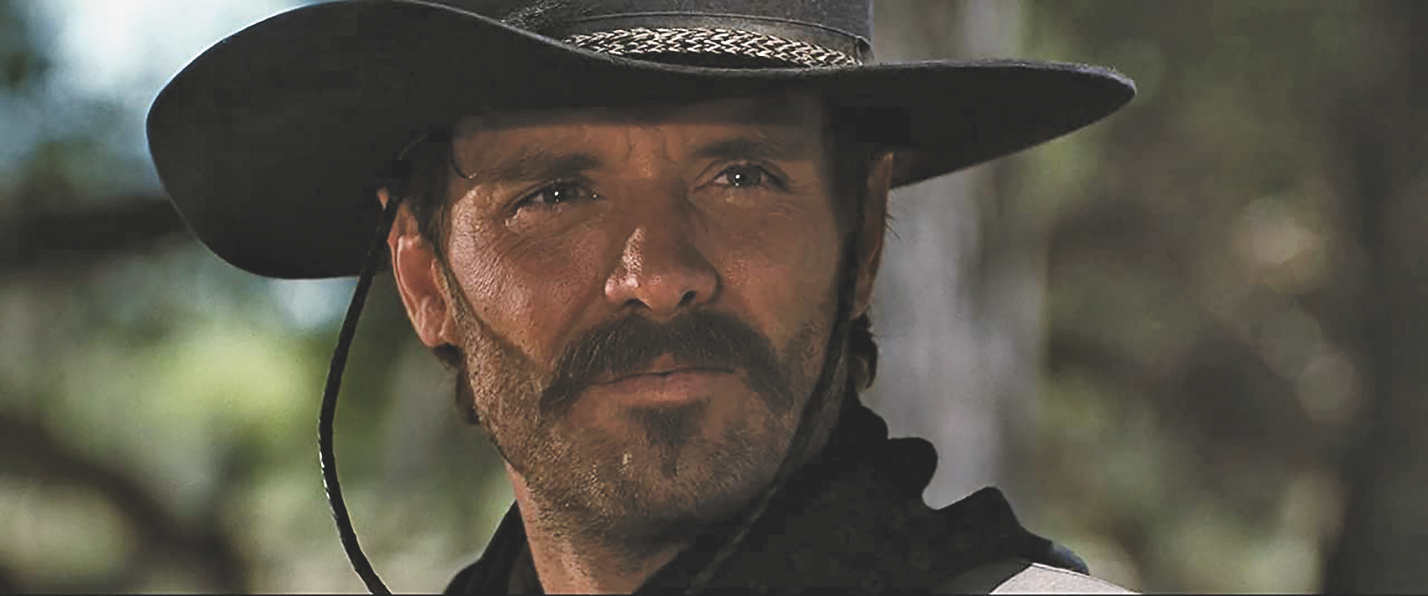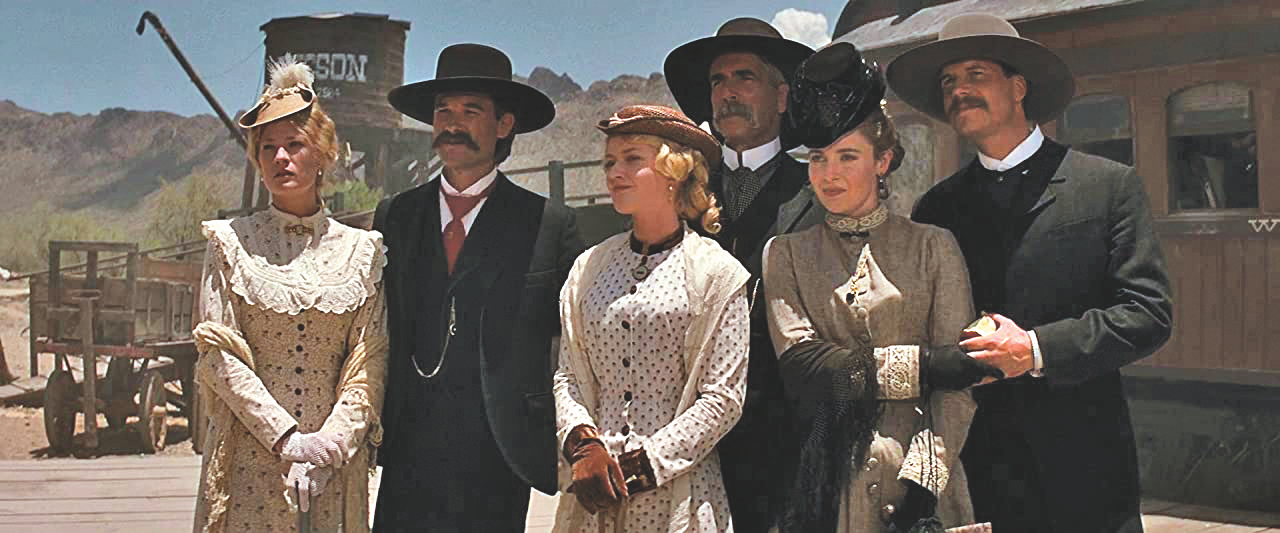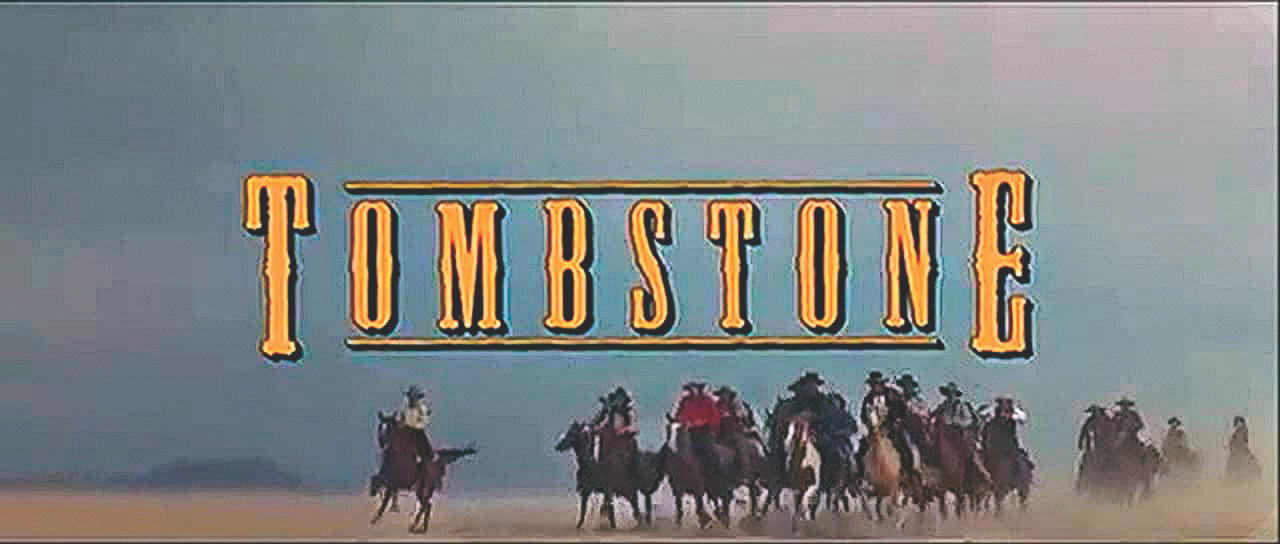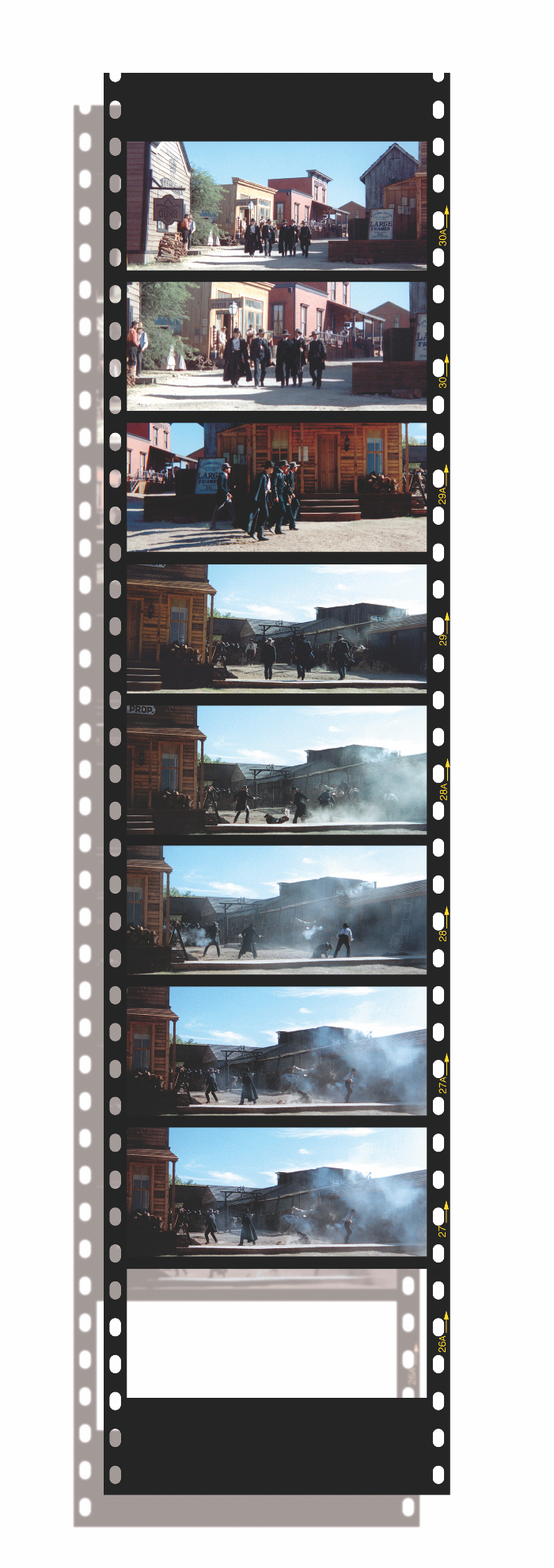The multitalented
actor who played Johnny Ringo in
Tombstone
reflects on Kevin Jarre’s script and the film’s
production.
About two years ago my wife and I decided we would spend more time in Arizona. We selected a home in historic Bisbee, drawn by its small-town, artisanal character. Bisbee also lies within close proximity of Tombstone, setting of the 1993 movie in which I played Johnny Ringo.
I’d agreed to
play Ringo, and I tried to envision the case
he would make for himself, to grasp his
reason for being. I didn’t approach him as a
“bad guy” per se; actors don’t play bad
guys; they play characters in situations. It
helped, too, how much the other characters
built up Johnny as the fearsome antagonist:
“The deadliest pistoleer since Wild Bill,”
Doc calls him in their first scene. And near
the end, on the night of the final showdown,
Doc and Wyatt wax eloquent on what makes a
man like Johnny tick: “Got a great empty
hole right through the middle of him and no
matter what he does he can’t ever fill it…he
wants revenge.” “For what?” “For being
born.” After a buildup like that, I didn’t
have to do a whole lot more than just show
up.

Michael Biehn inhabited the Tombstone role of Johnny Ringo as no other actor, before or since. Biehn credits Jarre’s script for inspiring his fan-favorite interpretation of the outlaw.
Overkill, I protested.
Johnny’s villainous persona is already
established by now; if shooting a Catholic
priest at a wedding hadn’t accomplished
that, it’s hard to imagine what would. And I
felt demonstrating Johnny’s knowledge of the
Bible and Latin prior to shooting the priest
suggested a backstory involving the church
that gave him grounds for his actions.
That “See, Johnny, there is a God” line
didn’t survive to the final film; we never
shot it. All movies undergo screenplay
modifications prior to and during production
as well as through editing, this was just
one of many cuts. In fact, the
story-behind-the-story of Tombstone is just
how severely the screenplay was “modified”
when screenwriter Kevin Jarre was dismissed
as director weeks into production. Whole
sequences went on the chopping block during
the hectic weekend following Kevin’s
departure, when the fate of the production
hung in the balance.
Kurt Russell
talked in these pages (True West, October
2006) about what he and the producers faced
in determining what would remain of the
screenplay, a dilemma made even more
difficult by the decision to not use any of
Kevin’s footage. Kurt talked about how much
he had to pull down from Wyatt’s scenes to
give the other characters breathing space.
The Cowboy roles also underwent severe cuts;
Powers Booth and I lost meaty scenes and
fifth credited Robert Burke (Frank McLaury)
barely has any lines or screen time in the
movie.
I had long believed
that after Kevin’s departure, Tombstone lost
the depth of his original vision; that the
shadings and nuances of the primary figures
had been stripped away and what remained
were the familiar, stereotypical caricatures
of the standard Western. I’m sure my
identification with Ringo and my bonding
with the actors playing other Cowboys put
blinders on me and rendered my memories
myopic. I’d come to believe that Kevin’s
almost fanatical desire for historical
accuracy in matters like wardrobe and
weaponry meant that his screenplay was
similarly accurate in depicting the fullness
of its characters.
I’d come to
believe that with such certainty that I
recently did something I’ve never done
before—dug up a copy of the version of
Tombstone I first read 30 years ago. I don’t
watch my old movies—the “willing suspension
of disbelief” just isn’t there for me—let
alone reread the screenplays. But filled
with what I’d been reading and fired by the
conviction that Kevin had tried to tell a
truer story than all the previous versions
by far, I began reading.

Kevin Jarre’s original Tombstone script is noted for having much fuller roles—and more dialogue—for the actresses who played the Earp women. L.-r.: Dana Wheeler-Nicolson as Mattie, Kurt Russell as Wyatt, Paula Malcomson as Allie, Sam Elliott as Virgil, Lisa Collins as Louisa and Bill Paxton as Morgan.
There was a
comforting old familiarity in the
screenplay’s opening lines, Robert Mitchum’s
voice intoning the opening monologue.
Mitchum had been cast as Old Man Clanton in
the first scene, but injury kept him from
filming, so he narrated instead, and the Old
Man went to an early grave as Curly Bill
took his best lines. I was fortunate to get
the screenplay early, and the caliber of the
cast that came together would be among the
best of any film of the decade, I would
argue, a testament to the screenplay’s
quality. “Godfather of Westerns,” it’s been
called.
My first thought after
putting the screenplay down after rereading
it, however, was “What just happened?”
This wasn’t what I remembered at all.
That subtlety and nuance, that balanced
presentation of the characters I’d persuaded
myself was the bedrock of Kevin’s
screenplay, never existed. Kevin went all in
showering the Cowboys in villainy at every
turn while exalting Wyatt into an avenging
angel Frontier Dirty Harry.
The
Wyatt lionizing reaches a high-water mark in
a scene near the end during the vendetta
ride. Wyatt stumbles upon a wagon train
filled with fellow Illini, who hail him
without knowing anything about him, a
sequence that ends with a nod to a classic
Western with a little boy calling after him
something akin to “Come home, Wyatt, come
home.” Cue the music. That sequence never
got shot, as was true of much of the
screenplay’s last third, which included
subplots drawing out the vendetta ride into
a meandering marathon.
I thought when
I got to page 90 that I must be nearing the
end and gasped when I saw there were still
40 more pages!
In his True
West interview, Kurt Russell said he
often urged Kevin to cut 20 pages, and I’m
sure he was referring to this material since
much of it went with Kevin. Wyatt lost some
nice moments—he had plenty—and Johnny lost a
rousing version of a “St. Crispin’s Day”
oration taking command of the Cowboys in the
aftermath of Curly Bill’s demise “ … This is
my time, children. This is where I get
woolly.”

One significant
discovery for me was how much fuller the
women’s roles had been; I hadn’t appreciated
just how severely they’d been emptied out
with the screenplay cuts. Josie (Dana
Delany) was an integral player in Tombstone
history as well as in the screenplay. She
was first engaged to Sheriff Behan before
fixing her eyes on Wyatt, and the ensuing
romantic triangle contributed to the
tensions that resulted in the gunfight.
With Kevin’s departure, Josie’s screen
time was so scaled back that any reference
to her involvement with Behan disappeared,
and her relationship with Wyatt amounts to
little more than a chance encounter on
horseback. A tense scene with Josie and
Mattie Earp vanished, along with just about
any other presence of the Earp wives. In the
screenplay, Big Nose Kate’s repartee was
every bit the match for Doc Holliday’s
wisecracks, but in the movie she’s little
more than an adorning onlooker.
Without question the biggest eye-opening
takeaway for me in the screenplay is just
how strenuously Kevin pushes the “depraved”
label on the Cowboys. My illusions about
“nuance” and “shadings” got put to rest
right from the start with this now-deleted
definition of Cowboy—“an insult implying
deviant sexuality.”
From there
follows a palpable homoerotic undercurrent
amongst the cowpokes, almost as though they
were a crew of “gay caballeros” and Curly
Bill’s frequent protective arm around the
shoulder of “Sister Boy” Breakenridge (Jason
Priestly) suggests they may have strayed off
to Brokeback Mountain a time or two. This
“sexual depravity” element feels like a dead
horse the screenplay insists on flogging,
one of several the film didn’t need or use.
Clearly, then, no one has a monopoly
when it comes to myth-making and
truth-bending; there’s a veritable glory
hole of it surrounding tales of Tombstone. I
didn’t realize how in my “misremembering,”
I’d mythologized Kevin Jarre’s screenplay
into something he never intended it to be.
Kevin very much followed the Liberty Valance
dictum that “when legend becomes fact, print
the legend.” The movie that emerged after
his departure is a boiled-down version of
what was always in the screenplay and not
some compromised artistic vision. The irony
is in no way lost on me that for months now
I’ve been advocating for a greater embrace
of “the truth about Tombstone” while at the
same time remaining so oblivious to the
truth about something I should have known
all along. Wouldn’t be the first time.
